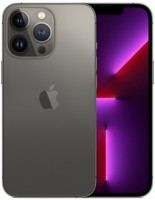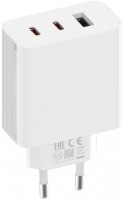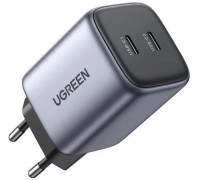Apple iPhone 11 Pro 256 GB / 2 SIM
 | Outdated Product £347.49 An improved version of the iPhone 11, with the corresponding Pro index. The main difference between these phones is in the cameras. The iPhone 11 Pro has three, while the iPhone 11 has only two. The third camera is equipped with a telephoto lens, and allows you to shoot photos and videos with a 2x optical zoom. In this case, smooth switching between cameras is used: first, a digital zoom is applied on the main lens, and when a certain degree of magnification is reached, the shooting automatically switches to a “long-range” camera. Like the iPhone 11, there is a night mode plus shooting video in 4K resolution using HDR and a frame rate of 60 fps. There is a function of dual filming (simultaneously with the front camera and the main one). At the same time, image magnification is supplemented...by “sound zoom”: sound is recorded only from objects in the frame, as when using a directional microphone. There are also differences from the basic version of the iPhone 11 in the display: it has become smaller, the frames around the edges are narrower, HDR support has been added, and the brightness has increased by 20%. 3D Touch is missing (however, these are features of all versions of the iPhone 11). The back cover is glass, but unlike the iPhone 11 and its predecessors, it is matte. The novelty can withstand immersion to a depth of 4 m, which is 2.5 m deeper than the Samsung S10 Plus. The colour range consists of four options: black, gold, silver and new green. There are no gradient colours and overflows familiar to the Android environment. In addition to the headphones, the package includes 18W fast charging (recall, the predecessors included a regular adapter, and the maximum power in fast charging mode was limited to 15W). The current version of the iPhone 11 Pro for Asian markets is Hong Kong, Macau (nano+nano SIM). There is a model for nano + eSIM, focused on the European market. Check this point with the seller before buying. |
An improved version of the iPhone 11, with the corresponding Pro index. The main difference between these phones is in the cameras. The iPhone 11 Pro has three, while the iPhone 11 has only two. The third camera is equipped with a telephoto lens, and allows you to shoot photos and videos with a 2x optical zoom. In this case, smooth switching between cameras is used: first, a digital zoom is applied on the main lens, and when a certain degree of magnification is reached, the shooting automatically switches to a “long-range” camera.
Like the iPhone 11, there is a night mode plus shooting video in 4K resolution using HDR and a frame rate of 60 fps. There is a function of dual filming (simultaneously with the front camera and the main one). At the same time, image magnification is supplemented by “sound zoom”: sound is recorded only from objects in the frame, as when using a directional microphone. There are also differences from the basic version of the iPhone 11 in the display: it has become smaller, the frames around the edges are narrower, HDR support has been added, and the brightness has increased by 20%.
3D Touch is missing (however, these are features of all versions of the iPhone 11). The back cover is glass, but unlike the iPhone 11 and its predecessors, it is matte. The novelty can withstand immersion to a depth of 4 m, which is 2.5 m deeper than the Samsung S10 Plus. The colour range consists of four options: black, gold, silver and new green. There are no gradient colours and overflows familiar to the Android environment.
In addition to the headphones, the package includes 18W fast charging (recall, the predecessors included a regular adapter, and the maximum power in fast charging mode was limited to 15W). The current version of the iPhone 11 Pro for Asian markets is Hong Kong, Macau (nano+nano SIM). There is a model for nano + eSIM, focused on the European market. Check this point with the seller before buying.
|
| ||||||||||||||||||||||||||||||||||||||||||||||||||||||||||||||||||||||||||||||||||||||||||||||||||||||||||||||||||||||||||||||||||||||||||||||||||||||
Always clarify the specifications and configuration of the product with the online store manager before purchasing.
Catalog Apple 2025 - new arrivals, bestsellers, and the most relevant models Apple.


Apple iPhone 11 Pro configurations
| Price for Apple iPhone 11 Pro | ||||
|---|---|---|---|---|
| Apple iPhone 11 Pro 64 GB | from £174.99 | 7 offers | ||
| Apple iPhone 11 Pro 256 GB | from £219.99 | 5 offers | ||























































